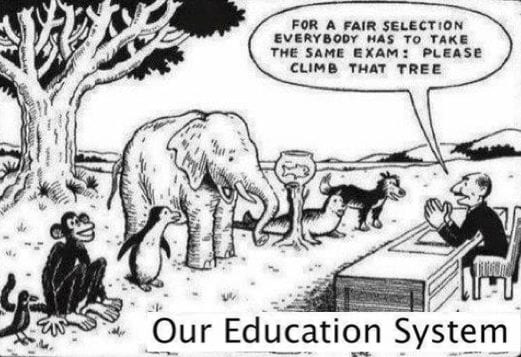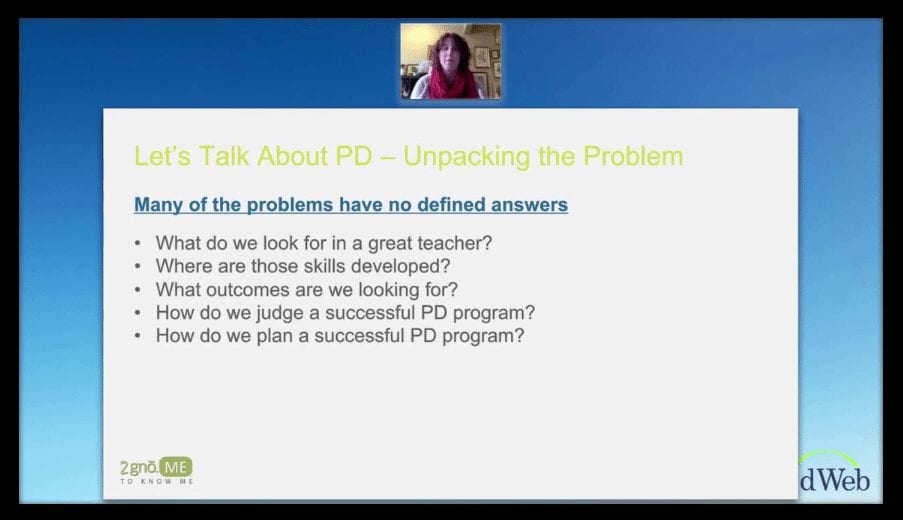Building a Successful PD Program

There are three challenges effecting teacher success. Rather than talking about teacher development, we put the cart before the horse by talking about all the things that come after that development, such as evaluations and test scores. We also have an idealized version of what a teacher is because of things like TV and movies. Last, there is a misconception that teachers only have an impact on a student during that one year in the classroom. For great teachers, this is simply not true.
As a classroom teacher for 15 years, Lynn experienced a variety of professional development. While some of it was great, she noted, there was no differentiation in the PD. “Why do we do professional development the way we do it?” she asked. If we recognize the different identities of our students, we should do the same for our teachers and provide each individual with the professional development they need, rather than ask them to fit inside a box.

Recognizing leaders from within the school and building a cohort of faculty that can run the program creates more engaging PD, since teachers will be learning from their peers. Experiential learning, or learning by doing, instead of just being taught, is often the best way for someone to learn. This must be followed by ongoing support, which provides time to practice, take risks, and master skills. “If we have all of these elements in sync, we can have an amazing, impactful, and long-lasting professional development program,” said Lynn.
This broadcast was hosted by edWeb.net and sponsored by 2gnō.me.
This article was modified and published by eSchool News.
About the Presenter
Lynn Gershman has spent 15 years in the secondary classroom honing her practice and working to influence change on a larger scale. Her objective is to reform education in the U.S. through the use of technology. She believes that technology alone will not change the face of education, but when teachers are willing to examine and augment their practice with technology, it will revolutionize the way teachers teach and the way students learn.
Join the Community
New Models for Professional Learning is a free professional learning community (PLC) that will help you implement successful personalized professional learning programs and help educators take charge of their own professional development.
About the Sponsor





Comments are closed.